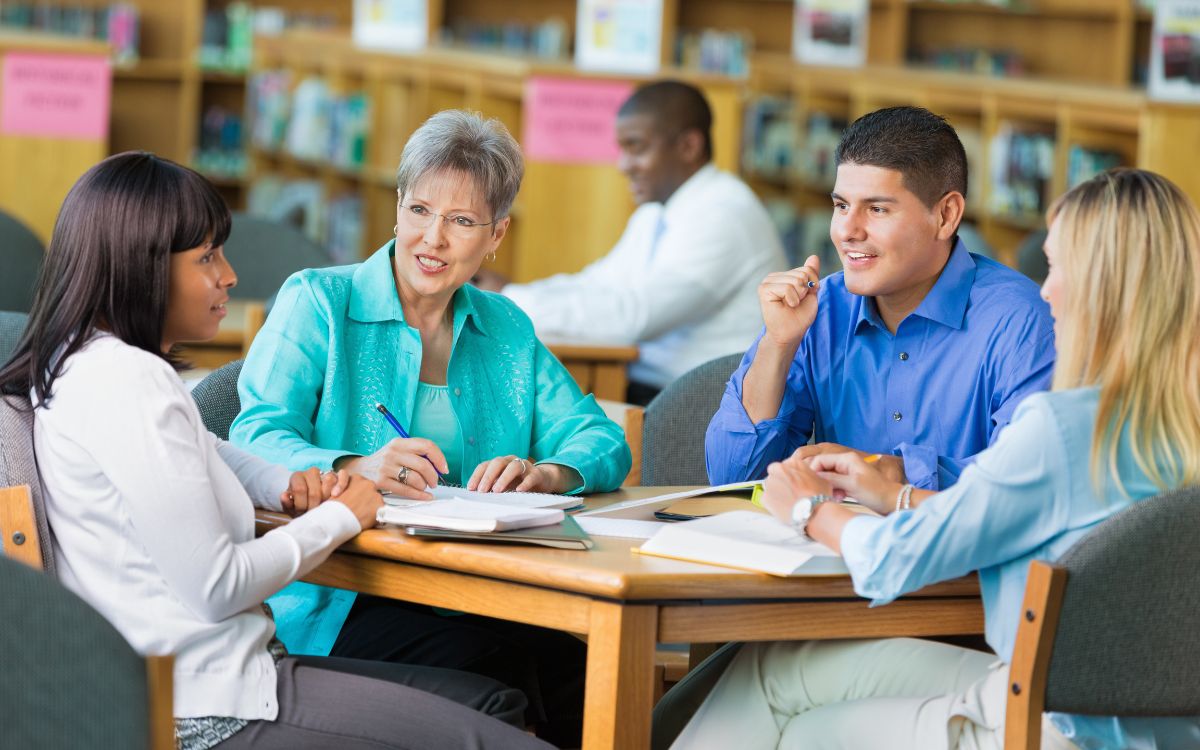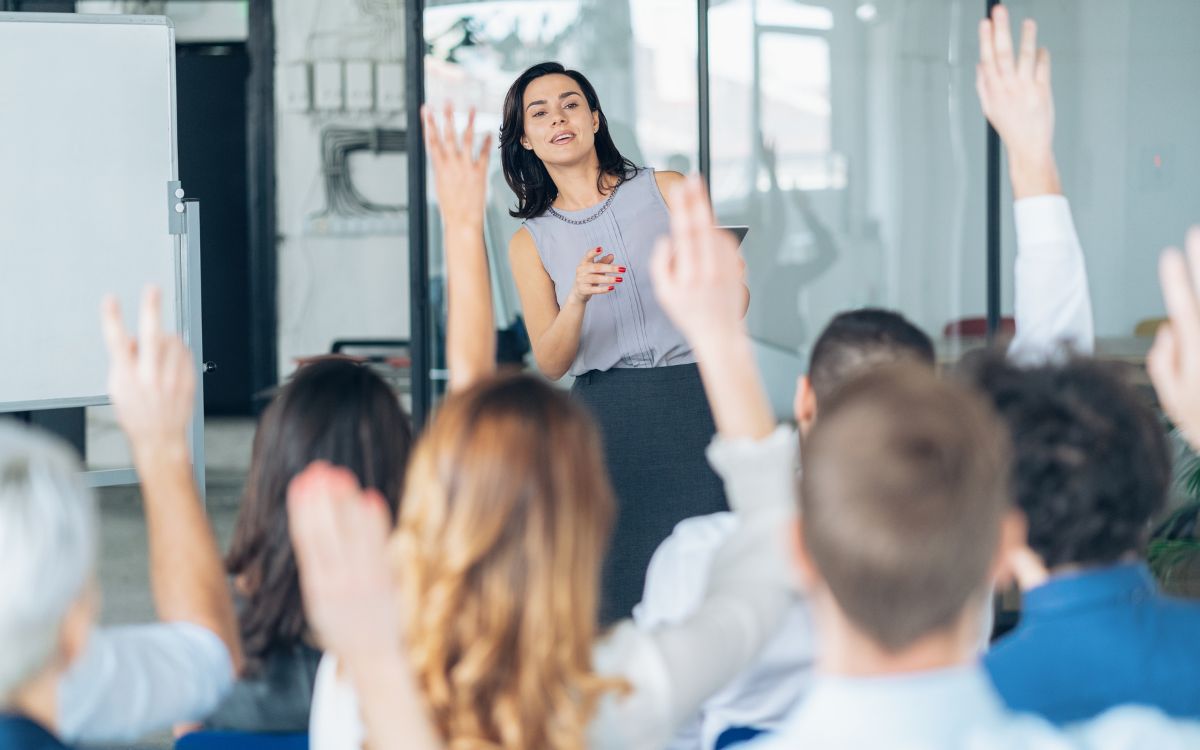Educational psychology deals with how people learn. However, it’s not limited to only education. It can address emotional, social, and cognitive learning; whether it’s a child, teen, or adult. That said, what is the importance of educational psychology?
In a world full of accessible information, learning has become a critical and necessary skill in order to take advantage of these resources. The overall goal of educational psychology is to retain new information and understand how individuals learn. With knowing this information, individuals can be taught and grasp information the way that best fits their personality.
Benefits of Educational Psychology

In addition, it benefits multiple areas and people such as students, educators, and institutions.
How Educational Psychology Benefits Educators
- Guidance to students
- Identified strengths and weaknesses help the teacher guide the student towards different approaches to a learning problem
- Creating an efficient learning environment in a classroom setting
- Tackles the issue of how teachers should structure their classrooms
- Narrowing down the daunting task of finding the best learning strategies and methods
- Reduces the time and effort for experimenting with different lesson plans
- Understanding The Student’s Individual Differences
- Allows for the teachers to adjust their teaching style. For example, some students might prefer a hands-off approach from their mentor
- Measuring success
- Proper assesments give a visualization of how much the student has grown and the teacher can utilize this data
How Educational Psychology Benefits Students
- Improved performance increases confidence and motivation
- Reveals strengths and weaknesses in specific areas
- Assesments can show the study where they rank compared to their peers
- Exposing potential factors that intervene with educational progress
How Educational Psychology Benefits Institutions
- Knowing how to prioritize school budgets toward the most effective teaching methods
- Giving students access to iPads or Laptops if deemed effective for learning
- Assessing lessons plans depending on which school grade for different student learning styles
- Potentially cater for factors that can intervene with educational progress
- For example, healthier dietary choices in cafeterias if the diet is a factor
Areas of Educational Psychology
There are five important theories that summarize being able to integrate the discipline of educational psychology to real life applications.
Experimentalism
- Significant figures: David A. Kolb and Carl Rogers
- Four stages: experiencing, absorbing and reflecting on experience, conceptualizing experience, and testing concepts in other situations
- Focuses on daily experiences where an individual obtains knowledge and understanding to change their behavior
- Dynamic Feedback Loop for educators
- In K-12 grades, this is done through projects and field trips
- College and graduate institutions apply this with internships, study abroad programs, and/or practicums
- Professional jobs do this by giving their workers the opportunity to participate in realistic problems or scenarios relative to the required job skills
Behaviorism
- Significant figures: Edward Thorndike, Ivan Pavlov, John B. Watson, and B.F. Skinner
- Behavior change is done by responding to the environment; can be positive or negative stimuli. Reinforcement depends on if the behavior wants to be repeated or reduced
- “Rewarding” students with stickers on their exam after getting an A+ is an example of positive reinforcement since the teacher wants the student to repeatedly get an A+
- This is commonly applied in classrooms with the use of learning objectives or breaking down goals in lesson plans
- Feedback and criticism for discussion posts and/or papers is also an example
Constructivism
- Significant figures: John Dewey, Jean Piaget, Lev Vygotsky, and Jerome Bruner
- States that knowledge is created rather than received
- Common method for classroom settings is how students express different points of views
- Grading each other when doing group projects is also an example
Social and Contextual
- Significant figures: Lev Vygotsky, Albert Bandura, Jean Lave, Rogoff, Etienne Wenger, and Thomas Sergiovanni
- States that knowledge is the result of interactions between a situation and an individual
- Places importance on interactive learning
- Educators try to connect concepts that can be understandable to students. For example, visual representations such as illustrations or hands-on experiments for STEM classes
Cognitivism
- Significant figures: Jean Piaget, Jerome Bruner, Robert Mills Gagne, Marriner David Merill, Charles Reigeluth, and Roger Schank.
- Views behavior as an outcome of one’s thought
- An example of applied cognitivism in the classroom is multiple-choice exams or essays
Methods of Educational Psychology
When doing research for educational psychology, there are different ways researchers can gather data:
Development Method
This method is concerned with an individual’s growth over time. Starting at the very beginning of their development to the present and end
Experimental Method
This particular method gives the ability to see the independent and dependent variables. This method is concerned with using trials; such as understanding an individual’s attention span and memorization skills.
Clinical Method

This method is used in applied settings. Uses group or individual case studies to understand different emotions such as fear, anxiety, etc.
Observation
This method is used to compare an individual to another person through sight. Quite commonly used in research.
Introspection
In this method, the individual is responsible for analyzing their own behavior and emotions. Researchers can give out self-report surveys and quizzes for participants to answer. This is the second most commonly used method in research.
Types of Learners: According to Educational Psychology
Educational Psychology has revealed 7 different types of learners and the best ways each type can learn effectively:
Visual and Spatial Learner
Visual learners learn by seeing pictures, diagrams, charts, and reading. They remember things by what they see. They tend to be drawers and be very observant. The best way this type can learn better is by:
- Writing down important ideas and keywords
- Highlighting or color-coding things
- Closing their eyes and visualizing the information
- Making sure their vision is correct
- Utilizing flashcards or using mindmaps
- Drawing pictures to understand new concepts
- Sitting in front of the classroom
- Taking notes and recopying notes
Auditory and Musical Learner
Auditory learners learn by listening and hearing. They remember things by what they hear, even sounds. They tend to talk or hum and sing. The best way this type can learn better is by:
- Reading out loud the material they’re trying to learn
- Recording themselves and then listening to that recording
- Trying to teach the content to other people verbally
- Making sure to sit in the classroom where they can hear the teacher properly
Verbal Learner
Verbal learners learn by both written and spoken words. They remember things by writing and reading poems. They tend to be intellectuals and bookworms. The best way this type can learn better is by:
- Reading books out loud
- Using mnemonics to understand concepts
- Writing simple books or stories out of the material being learned
- Playing educational games
- Asking questions about the material and searching for the correct answers through written text
Logical and Mathematical Learner
Logical learners learn by thinking methodically and in linear order. They remember things by making connections. They tend to be good with numbers and recognize patterns. The best way this type can learn better is by:
- Breaking down a broad topic into smaller sections
- Highlighting important content
- Creating a structure or procedure for their notes such as subheadings
- If possible, categorizing or classifying the material into groups
Listing facts in order if the content allows, such as chronologically remembering important dates in a history class
Physical or Kinesthetic Learner
Physical or also known as “hands-on” learners learn by physically engaging with the material. They remember things by touching, moving, and doing physical activities. They tend to be outgoing and energetic. The best way this type can learn better is by:
- If learning science-related content; performing experiments if the environment allows
- Using physical flashcards where they can flip the card with their hands instead of using digital ones
- Multitasking can be beneficial, by listening to a recording of the lecture on their phone while going for a walk
- Creating a quiz over the material for themselves to take
- Tracing the words with their finger as they read
- Incorporating physical objects such as coins or blocks when learning math if doable
- Taking frequent breaks when learning
Social and Interpersonal Learner
Social learners learn by engaging with a group of people or being a leader. They remember things by being around people and sharing their knowledge with others. They tend to be extraverted and empathetic. The best way this type can learn better is by:
- Joining study groups or holding a book club
- Finding online forums or communities that learn the information together
- Teaching other people
- Field trips can also be utilized depending on the material such as going on hikes for a geology class to identify different rocks
- Reviewing and comparing other people’s work
Solitary and Intrapersonal Learner
Solitary learners learn by visualizing, hearing, physically, verbally, and logically. They mostly remember things by working alone. They tend to be independent and introspective. The best way this type can learn better is by:
- Keeping a journal or diary
- Setting their goals with their personal interests and beliefs in mind
- Having a varied assortment of resources such as different books, sites, and videos over the material
- Being in a quiet environment when studying
- Using lists and checking off items
Careers in Educational Psychology

Educational psychologists can work for an array of people and fields such as administrators, teachers, institutions, etc. Overall they’re trying to help increase learning abilities in that environment.
A bachelor’s and a master’s degree tend to be required for these fields, especially if one wants to work for a school. According to the BLS, the median salary for educational psychologists is $79,000 and the top 10% of earners make $129,000.
Here are a few potential career opportunities for Educational Psychologists:
- Elementary Schools Teacher Training
- Secondary Schools Teacher Training
- College or University Research Programs
- Government Research Programs
- College Professors
- Directing Corporate Employee Programs
- Distance Learning Companies
- Education Policy Regulation
- Development of Instructional Materials
Educational Psychology as a whole is valuable and an important branch of Psychology, especially in the current digital age. As humans tend to be complex, so are our ways of grasping and retaining information. In order to address this complexity, educational psychology continues to be important and impactful to society; whether that’s through our education system or individuals themselves.
Related Articles
- 4 Different Types of Teaching Methods Broken Down
- What is the Teacher-Centered Approach?
- School Counselor vs. School Psychologist: What’s the Difference?
- What Are the Advantages and Disadvantages of Student-Centered Learning?



